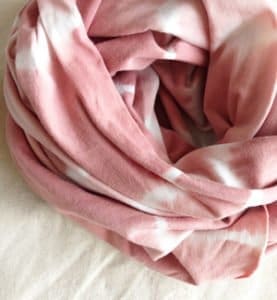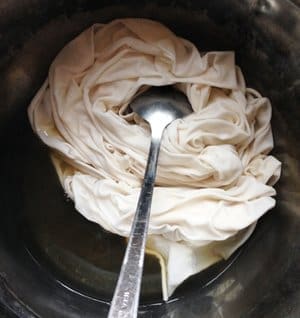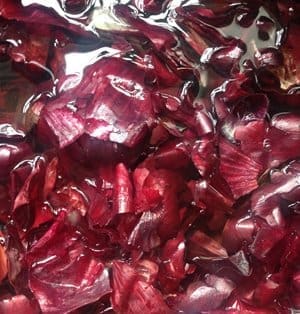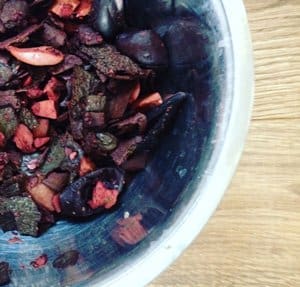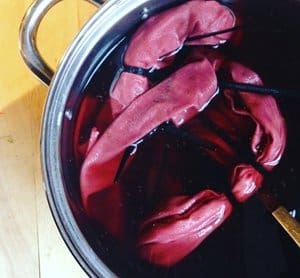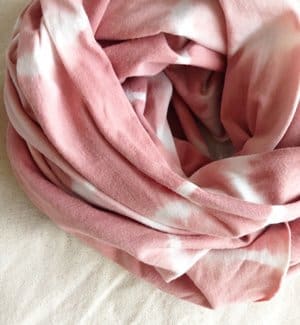January 2018
This is the beginning of my natural dyeing journey.
For the past few years or so I have generally focused on indigo dyeing and trying to learn and perfect the craft. But more and more I have been drawn to the idea of injecting some complementary colours into my collection.
There are so many natural dye materials. My main aim was to create strong clear colours with colourfastness. First experiments were with onion skins collected from cooking (with the help of my Auntie Mary). I chose them due to their high tannin content. Tannin rich dyes love bonding with cellulose–based fibres. Before any dyeing can begin the fabric must be cleaned/scoured. It sounds more technical than it really is. There is so much dirt collected through production – dust, grease, residue, all sorts of grime, that if a fabric hasn’t been cleaned we will get patchy uneven dyeing/colour results.
So to begin, I filled a large stainless steal cooking pot with water and added soda ash to help the scouring process. Then added my organic cotton bamboo jersey to the water and brought to a continuous simmer for roughly 2 hours. By the end of the time the water was so dirty………..
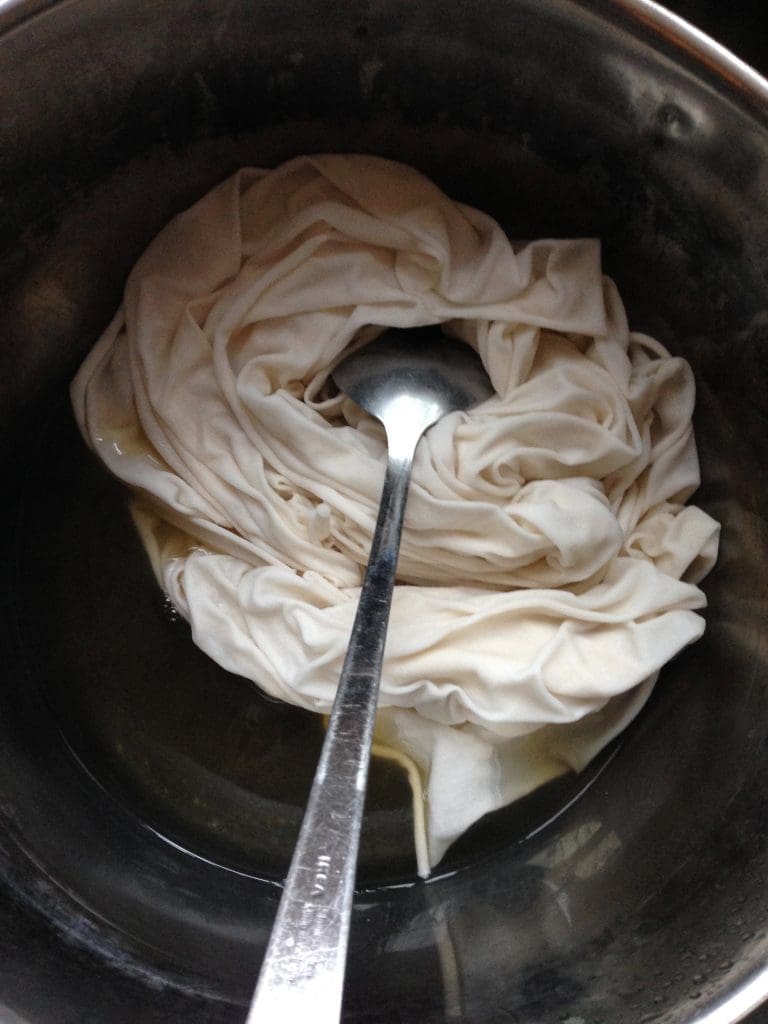

Next I had to mordant the fabric.
A mordant is a chemical agent that will stick fast to both the fibres and the dye.
I used aluminium acetate. By using a mordant it will make the fabric colourfast and hopefully give us amazing colour.
Next, I prepared the onion skins buy putting them into the bottom of the big saucepan and adding cold water, giving them a swoosh around to get rid of any dust. Then gentley drained off the dirty water. Filled the pot up to about 3/4 full and brought it to a simmer. I did it for about 2 hours.
The colour looked strong. I drained it off through a seive into a bucket. Discarded the onion mulch, swilled out the pan and then returned the onion dye back to the pot.
Now I was ready to dye. I gently rinsed the mordanted jersey to wash off any unattached mordant. Then added the fabric to the gently simmering pot and left it for about an hour.
I wasn’t expecting great things from my first attempts with onion skins but I was truly amazed at the depth and quality of colour. Such a beautiful shade of mustardy yellow.
I think I have fallen in love with the natural dyeing process a bit more.
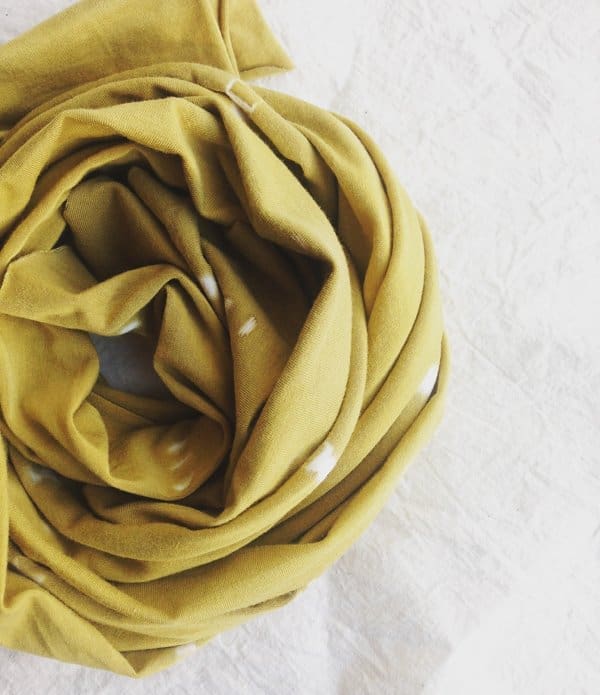

Who Knew?
I have heard a lot about avocado dye and have been dying to get dyeing. Supply is obviously key so I have been squirreling away all my skins and pits in a box in my freezer for about a month.
Mordanting the cloth yields brighter stronger colours as before.
Prepping was easy – just a good rinse. Then ripped them up, I used the pits too and chopped them in half. Filled a saucepan full of water and slowly brought to a simmer. The water began to change colour after about an hour to a pinky colour.
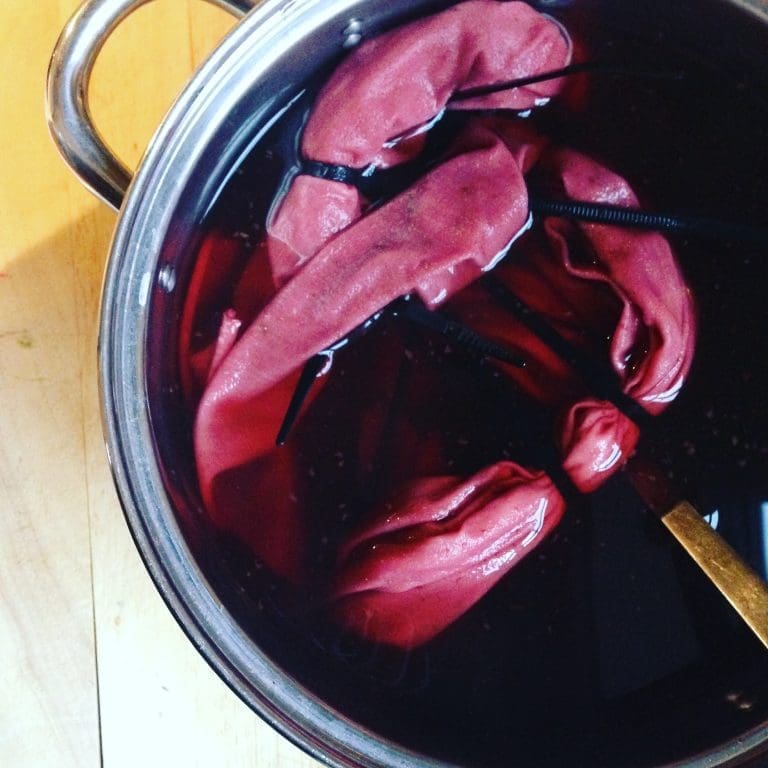

With the first batch of avocado dye it looked a little sludgey. The colour wasn’t very clear. So I drained it off into a bucket and put the mulch (skins and stones) back in the pot, refilled with fresh water and brought back to simmer for an hour. This second batch developed an amazing rich bright pink dye. I drained off again to be left with just the dye ( kept the mulch to use again). I added my organic cotton bamboo jersey to the pot and let it soak for 3-4 hours. After which I removed it and rinsed the jersey in cool water then popped into the washing machine on a COLD wash. The results are this gorgeous pink as you can see. Truly amazing what a very green avocado can do in addition to all its other super food talents.
